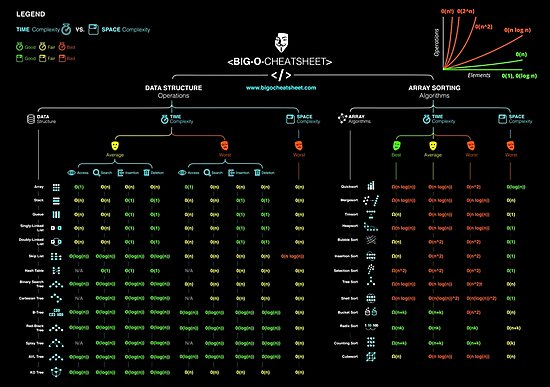Canvas Cheat Sheet
Using this cheat sheet will save you time and help you to become a more efficient programmer, web designer, or even help you gain more solid experience as a beginner in this field. I encourage you to go check out Skilled.co ‘s Canvas cheat sheet below and begin to create using their helpful, easy to read codes. For a Canvas exam or quiz, professors have access to something called a quiz log. This is sort of like a Canvas test cheating functionality. From this Canvas quiz log, cheating is something that can be identified. Professors can find out whether you left the exam and opened another tab to google the answers.
Our colleague, Colin Cieloha, American author and content marketer at Skilled.co recommended the HTML5 canvas cheatsheet developed by his company (and embedded below).
Html Canvas Cheat Sheet
Colin writes about everything that will draw his attention with a focus on the mobile and e-commerce space. When he is not writing he is spending his time traveling the globe and snowboarding. You can follow him on his Twitter at @ColinCieloha or on Linkedin. We asked Colin a number of questions about this resource. Details are below.
Become a Canvas Master with this HTML5 Cheat Sheet by Skilled.co
Skilled.co has released a new cheat sheet that enables new and experienced web developers alike to create original illustrations and animations. With the use of HTML5 advanced technology, coding enthusiasts of all experience levels are able to read and use this cheat sheet to create impressive designs. Canvas can also respond to all the usual JavaScript events, like clicking and keyboard commands and button clicks, so it’s even easier to use. Here we will explore the benefits of using the Canvas cheat sheet and how Canvas holds up against traditional Camel Case. It’s sure to save you time, effort, and headache.
Why is it important for web professionals to know/ use this cheat sheet?
It saves time! Instead of having to remember all the coding or search for individual codes, an HTML cheat sheet provides all of the most used codes in one easy place. There’s a lot to be said for having all of that extra effort minimized, the common codes are just a click of your bookmarks away. This is convenient for those freelance designers that are in a time crunch as this allows them to complete their work faster and reach deadlines.
Why should they be focused on canvas now?
Canvas technology is amazing because it’s super easy to use. For example, Canvas can draw colorful text to help your message pop on the screen – and you can even animate it! HTML <canvas> objects can move, too, whether it’s just a few bouncing balls or an intricate animation that tells a story. For designers interested in gaming software, the <canvas> element is a brilliant choice for building characters, worlds, and then setting it all into motion.
Canvas isn’t magic (close, but not magic). You’ll still need a basic understanding of HTML and JavaScript to make these codes work for you the way you want, but the <canvas> element is simple and easy to use. The HTML <canvas> element’s purpose is to create graphics, according to lines of script, but it’s only a container. The <canvas> element draws paths, boxes, circles, text, and helps you to create images. It also provides the user with graphs and charts to order their graphic data designs. To draw graphics, Canvas uses a JavaScript context object, which makes it easy and fast to create graphics in your design.

The <canvas> element runs into some trouble with older browsers, however, and may not be supported. Canvas is, however, supported in all recent versions of all major browsers, so as long as your browser is updated, Canvas should work just fine. Canvas’s default size is three hundred pixels by one hundred and fifty pixels, width and height respectively, but is customizable. You can adjust the size of the canvas by using the HTML height and width property in the program.
With Canvas, function names are short and easy to recognize, unlike functions written in CamelCase. Identifiers in CamelCase often require lowercase where it would be more convenient to use all caps. For example, acronyms. It’s much easier to identify a function, if acronyms like HTML or SQL are written in full capitalization, but CamelCase sometimes negates this convenience.
This causes a serious headache for designers when two acronyms need to be side by side in a line of script: “parse DBM XML” would become “parseDBMXML” or when the function starts with an acronym, like “SQL server” (which the designer would be forced to convert to “sQLServer”). Even if a programmer considers acronyms lower case words and writes “oldHtmlFile”, “parseDbmXml” or “sqlServer”, it causes a mess because it makes it difficult to discern if it an acronym or not. Best case scenario, the designer wastes time. The worst case scenario, they make a mistake and now must comb through complicated lines of script to amend the problem.
Canvas Cheat Sheet For Students
Conclusion
Canvas Cheat Sheet For Teachers
Hopefully this sheds light on the massive benefits of the Canvas cheat sheet. Using this cheat sheet will save you time and help you to become a more efficient programmer, web designer, or even help you gain more solid experience as a beginner in this field. I encourage you to go check out Skilled.co‘s Canvas cheat sheet below and begin to create using their helpful, easy to read codes. Have fun creating and I hope this saves you more time!
